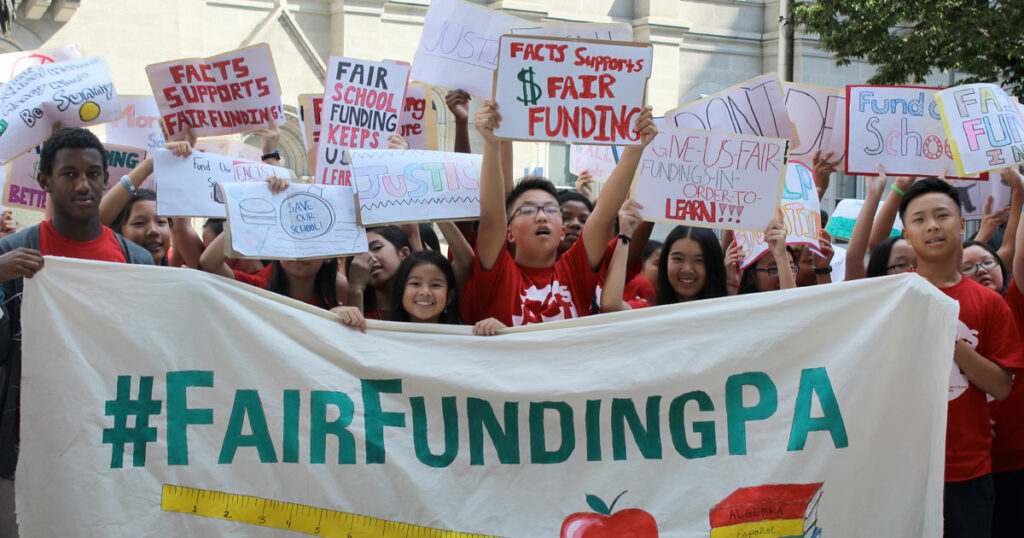Blog
A Court Case that Could Transform Public Schools in Pennsylvania

Last week, closing arguments concluded for one of the most consequential education lawsuits in Pennsylvania’s history. The question: is the commonwealth’s school funding formula so inequitable that it runs afoul of the Pennsylvania Constitution? The stakes: billions of dollars for public schools and the futures of more than a million students.
A myriad of individuals and organizations brought suit against Pennsylvania starting in 2014, including families, rural schools, and six school districts. The suit, filed by Education Law Center of PA, the Public Interest Law Center and the law firm O’Melveny, has been building momentum for more than seven years.
It’s clear from the numbers that Pennsylvania’s students desperately need 1) more funding, and 2) for that funding to be more equitably distributed.
Pennsylvania largely relies on local property taxes to fund public schools, more so than all but five other states in the country. This means that the less wealth a community has, the fewer resources are available to local schools. More than a century of segregation, discrimination, redlining and gentrification means that over half of PA’s Black students and 40% of Latino students attend schools in the least wealthy 20% of districts. Property tax funding magnifies race and class disparities.
The least wealthy districts have $4,800 less per pupil than their wealthy counterparts, one of the highest funding gaps in the country. That lack of funding means schools with no AP courses, worse facilities, outdated textbooks, and fewer arts, sports, and enrichment programs. All told, it’s estimated that Pennsylvania is shortchanging its schools by $4.6 billion.
Students, parents, educators and officials in William Penn School District, one of the plaintiffs, held a vigil the night the trial ended:
- “Pennsylvania has failed to provide the resources our children need to be successful. Each year our district has struggled to meet the challenges that our students face, we simply do not have adequate or equitable funding to provide our students with the resources as wealthier districts,” said William Penn School District Superintendent Dr. Eric Becoats.
- With a shortage of proper funding, he noted the impossible choices administrators face such having a leaky roof fixed or hiring a needed counselor.
- “Expert witnesses testified to what we already know, that money matters,” Becoats said. “Without resources, our students, your students, struggle.”
Can advocates win the $4.6 billion owed to Pennsylvania’s children? They’re in good company: neighboring states New York and New Jersey saw massive budget increases after successful education funding lawsuits. New York’s Campaign for Fiscal Equity case, which the Schott Foundation helped fund from the start, and New Jersey’s Abbott cases won billions of new dollars for the students and schools who need it most. Those who live, teach, and learn in the Keystone State deserve the same opportunity too.
Learn more about the case at Fund Our Schools PA.
Top photo from Gadfly on the Wall.


